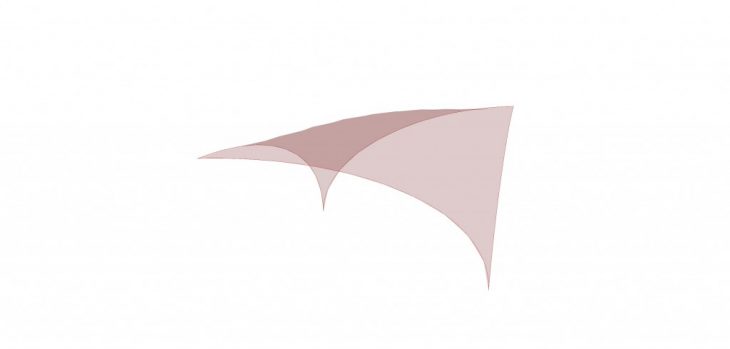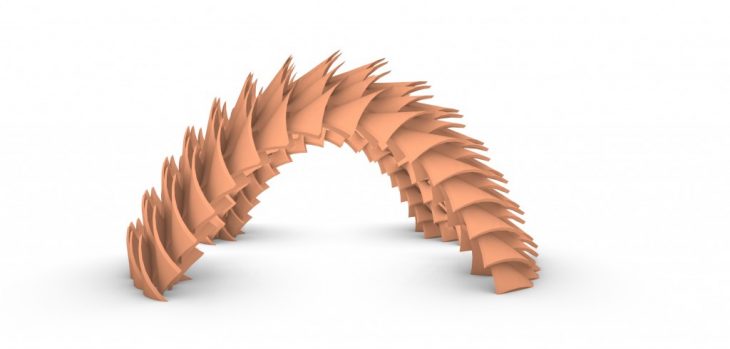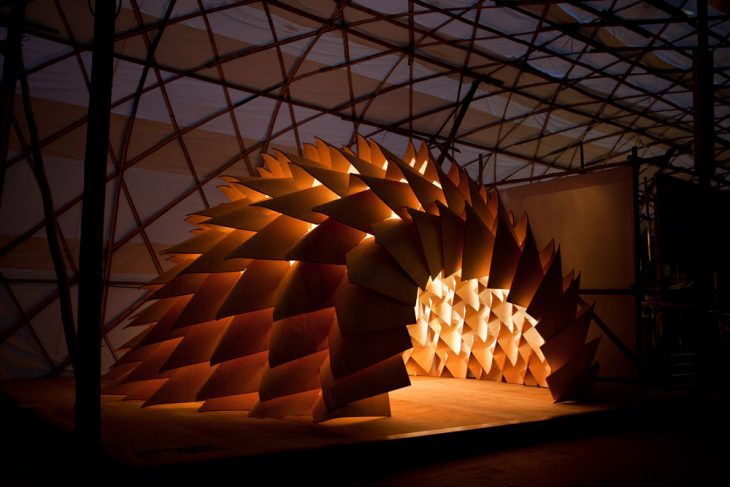
INFORMATION
Architects: Emmi Keskisarja, Kristof Crolla (LEAD) and Sebastien Delagrange (LEAD), Pekka Tynkkynen;
Location: Kowloon Park, Hong Kong;
Collaborators: Gilles Retsin, EDGE Laboratory for Architectural and Urban Research, Tampere University of Technology, UPM Kymmene: Area: 16.0 m2
Project Year: 2012
Text description provided by the architects. The Dragon Skin Pavilion is an architectural art installation that challenges and explores the spatial, tactile, and material possibilities architecture is offered today by revolutions in digital fabrication and manufacturing technology. Its highly expressive and porous skin questions the notion of boundary: as light and views are filtered, softened and dampened towards the interior, the interior is slowly and more hesitantly revealed outwards.
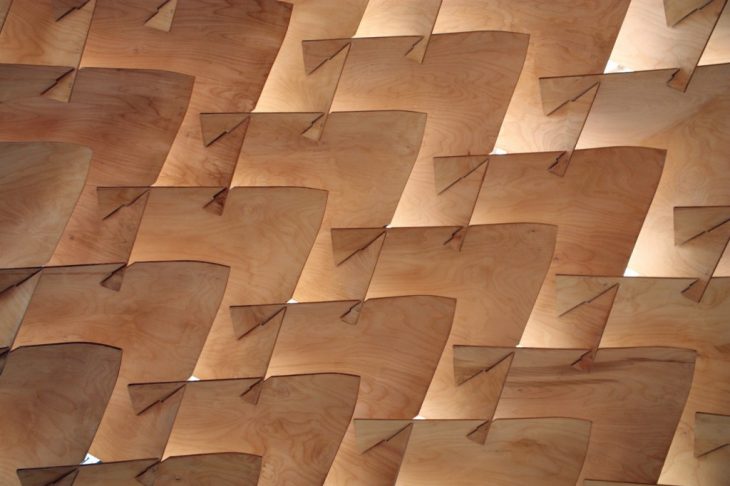

Process
Pavilion
Quadrangle Matrix
1.Create two points A1 and A2 on X-axis, move them along Y-axis and get points B1 and B2.
2.Use catenary connect A1, A2 and B1, B2. The gravity is -Y and Y.
3.Divide two catenaries into 9 segments. Create catenaries between division points. The gravity is Z. The lengths are distances multiply a parameter. Divide each catenary between division points into 15 segments.
4.Use division points from last step as the central points to create quadrangles. Planes are perpendicular to normals of catenaries.

Frame
Bending Simulation
Bending curve could be catenary or arc. Compare them and choose a better one.
Create catenary between (0, 0) and a point on X-axis with a parameter X value. The length is always equal to the length of quadrangle’s catercorner.
Use component Arc SED. The angel(?) between X-axis and start tangent is parameter. Since the length of the arc is always equal to quadrangles’ catercorner length(A), the mathematical relation between start points‘ X value(x) and the angle is x=sin?*A/2?.
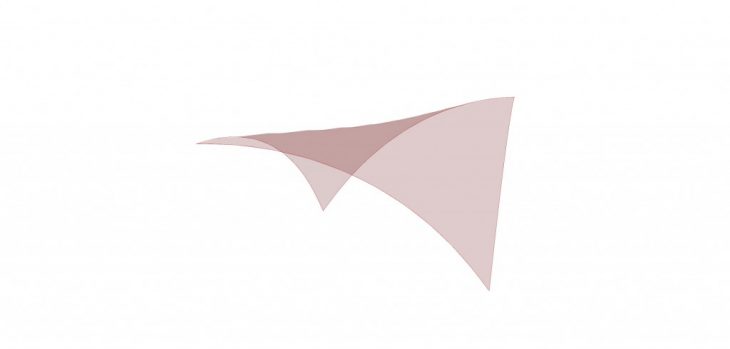
Panel from Carenary
